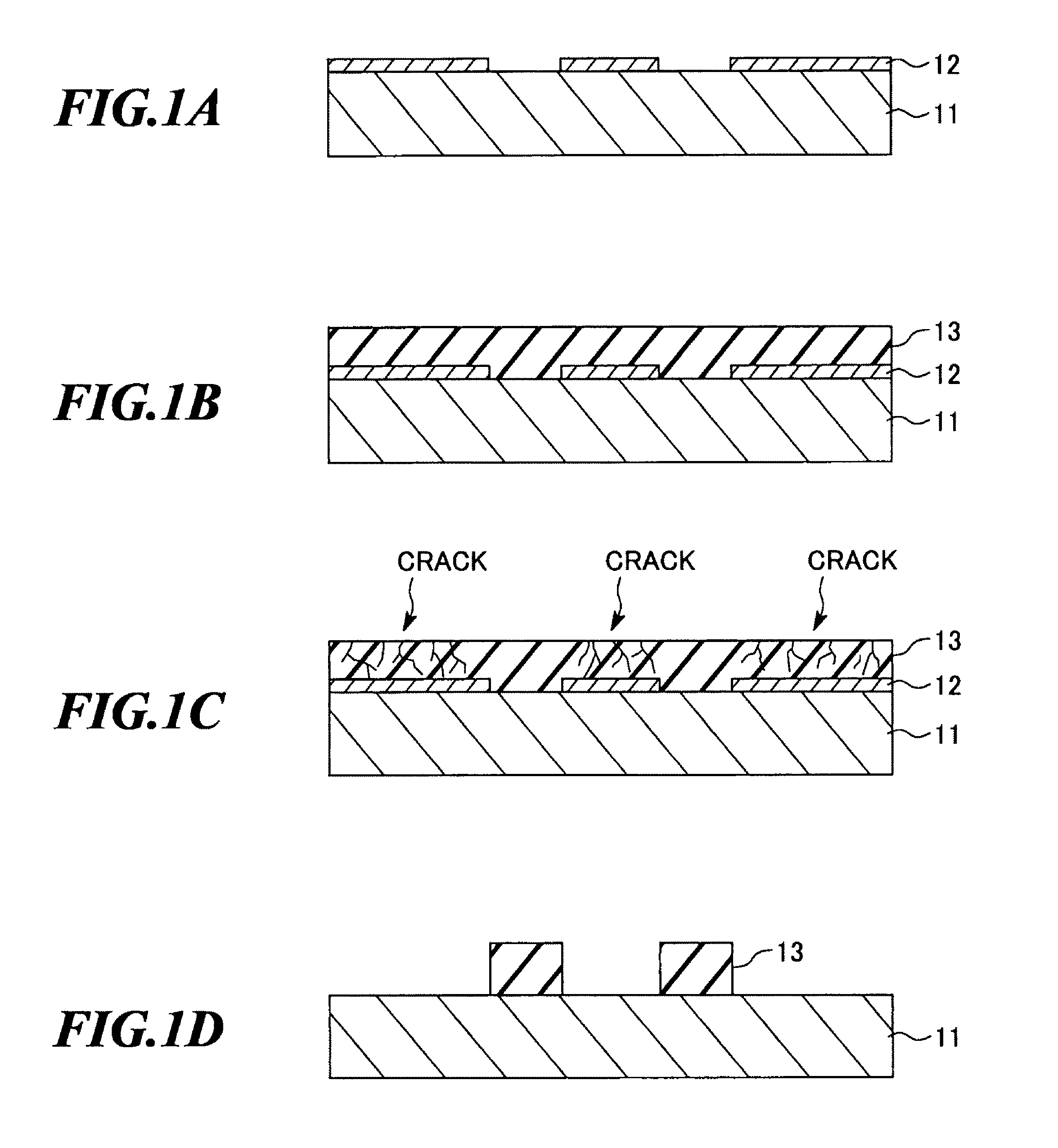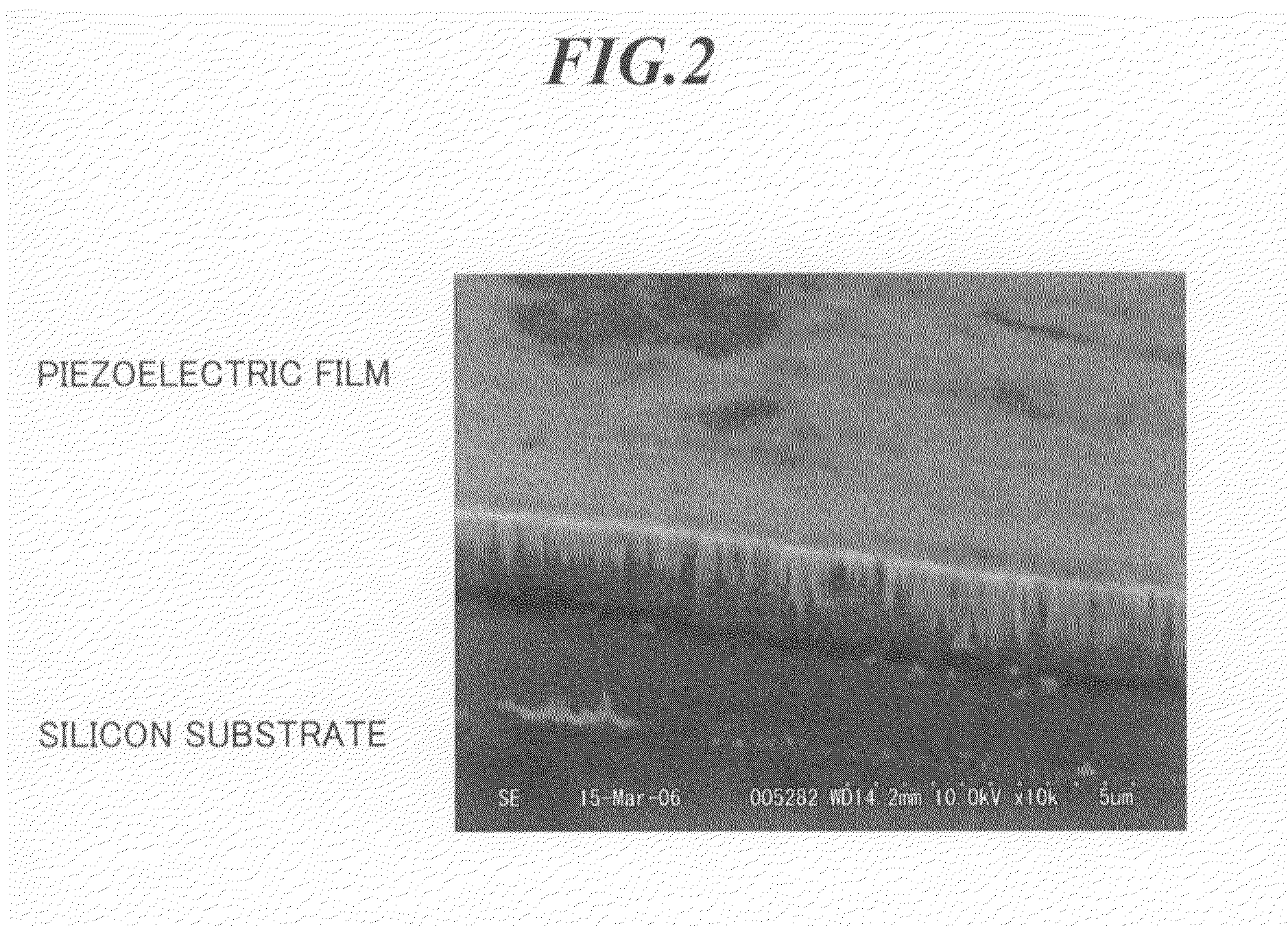Method of forming pattern of inorganic material film comprising thermally induced cracking
a technology of inorganic material and pattern, which is applied in the direction of microelectromechanical systems, electrical equipment, and semiconductor devices, etc., can solve the problems of not many appropriate fine patterning methods and appropriate materials to be employed therein, and the application of pattern-forming of functional films is not so practical, and achieves easy penetration and removal. , the effect of easy and clean removal
- Summary
- Abstract
- Description
- Claims
- Application Information
AI Technical Summary
Benefits of technology
Problems solved by technology
Method used
Image
Examples
Embodiment Construction
[0019]Hereinafter, preferred embodiments of the present invention will be explained in detail by referring to the drawings. The same reference numerals are assigned to the same component elements and the description thereof will be omitted.
[0020]In this application, a material forming a main part, that exerts a function of an element (a multilayered capacitor, a piezoelectric element, etc.), such as a dielectric film, a piezoelectric film, and so on is referred to as a material having functionality or simply as a functional material. Further, a film formed of a functional material is referred to as a functional film.
[0021]FIGS. 1A-1D are diagrams for explanation of a method of forming a pattern of an inorganic material film according to the first embodiment of the present invention.
[0022]First, as shown in FIG. 1A, a substrate 11 is prepared, and a pattern of a sacrifice layer 12 is formed thereon. For the substrate 11, a material containing at least one of silicon (Si), copper (Cu)...
PUM
| Property | Measurement | Unit |
|---|---|---|
| thickness | aaaaa | aaaaa |
| temperature | aaaaa | aaaaa |
| temperature | aaaaa | aaaaa |
Abstract
Description
Claims
Application Information
 Login to View More
Login to View More - R&D
- Intellectual Property
- Life Sciences
- Materials
- Tech Scout
- Unparalleled Data Quality
- Higher Quality Content
- 60% Fewer Hallucinations
Browse by: Latest US Patents, China's latest patents, Technical Efficacy Thesaurus, Application Domain, Technology Topic, Popular Technical Reports.
© 2025 PatSnap. All rights reserved.Legal|Privacy policy|Modern Slavery Act Transparency Statement|Sitemap|About US| Contact US: help@patsnap.com



